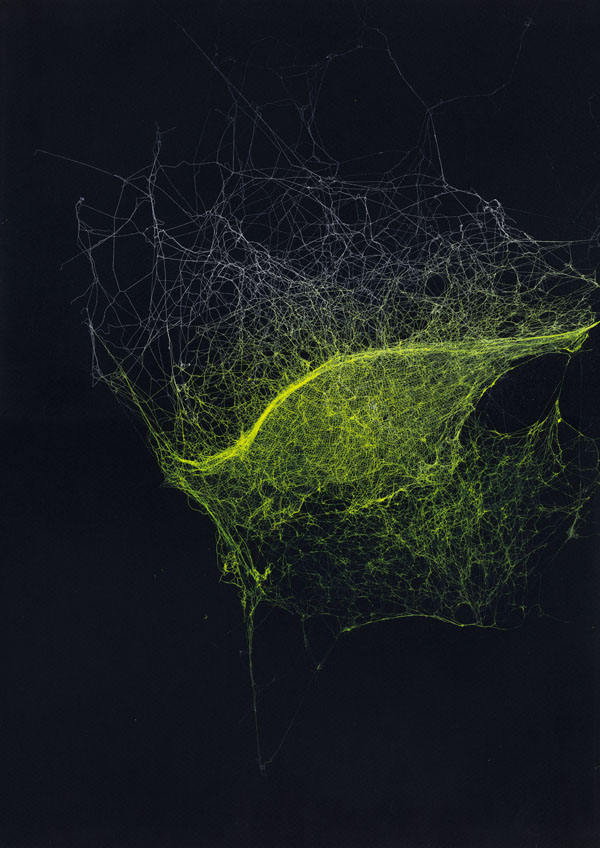 For some years now I have wanted to comment on the "cursor". Now is the time! Having just sat through a conference almost entirely dictated by powerpoint-style slides (my own talk included) it was interesting to note the role of the laser pointer and its digital analog, the cursor. Once I noticed it, the pointer seemed to sit upon the surface of the content, hovering over slides like an invisible elephant hovers over a dinner table.
For some years now I have wanted to comment on the "cursor". Now is the time! Having just sat through a conference almost entirely dictated by powerpoint-style slides (my own talk included) it was interesting to note the role of the laser pointer and its digital analog, the cursor. Once I noticed it, the pointer seemed to sit upon the surface of the content, hovering over slides like an invisible elephant hovers over a dinner table.For many of the talks speakers employed the supplied green laser pointer, whether they needed to or not. This green dot-making device was brandished with abandon, sometimes on the side walls of the auditorium as speakers forgot to release the switch, once or twice into the audience, but most often, in a jumpy-skippy fashion across regions of the projector screen. It is very hard to hold such a fine point steady from a distance, a phenomenon which is made more apparent in large auditoria since here the speaker stands far from the projection screen. By and large the pointer was not needed for indicating details on the slides. Instead it was used as a crutch, perhaps giving the speaker something to focus on apart from the audience.
The worst case I saw was of a speaker using the laser pointer to hop from word to word of his bullet points as he read the text from his slide... "follow the bouncing ball and sing along". Oh dear. The talk was otherwise very interesting, but it was hard not to giggle at the invisible elephant. Was I the only one who could see it?
Of course slide presentation software typically allows the speaker to use the mouse cursor. A few speakers did take advantage of this. This technique has the advantage of allowing the speaker to position the cursor, then leave it steadily in place. However laptop trackpads can be a fiddly means of positioning this cursor under pressure. One amusing episode ensued when a speaker attempted to operate the controls of a movie player on the trackpad, whilst looking behind him at the large projection screen on which the movie was being displayed. It took him awhile to negotiate the reverse mapping and trackpad sensitivity!
The mouse cursor's continued presence onscreen after its relevance has been removed is seldom a source of frustration for speakers... although it should be! Some software has the cursor vanish after a period of inactivity. This can be helpful, or it can be problematic depending on the speaker's needs for a specific slide.
It is interesting to note people's ability to see "through" a cursor. A number of presenters had beautiful images to show, and they left the cursor positioned right in the middle of them, unnoticed. I have seen Skype sessions, artists showing their imagery, movies being viewed... all with the cursor smack bang in the middle of the screen. It is amazing how readily we are able to see past this visual obstacle. This is akin to my experience of (for instance) Melbourne's suburban and city streets — I can often see past the tangle of power lines, tram wires, advertising signage and other visual pollution to admire a "beautiful" street (see Robin Boyd - The Australian Ugliness). This experience is also the norm when viewing Japanese temples and gardens. They are typically surrounded by old rubbish, blue tarpaulins, pipes, taps, wires, fences and signs but tourists come to admire their beauty and manage to turn a blind eye to all of this.
"So smarty pants. What did you do?", I can hear you ask. Well, I just added slides with arrow markers pre-placed to highlight the sections of slide I wanted to discuss. These appeared and vanished as I hit the space bar on the keyboard — something that is easy to do in an instant, without error. It mostly worked. Except I once forgot to use the arrow and pointed with my hand. Then when I tried to progress to the next slide I of course made the arrow appear at the point I had just discussed... a glitch. But not catastrophic I think and worth the improved pointing I achieved elsewhere in my talk.
...thank goodness for selective attention. Without it we have already polluted most of the world's potentially "beautiful" views. Anyway, feel free to leave the cursor on my nose when you Skype me. I know that you can't see this invisible elephant :-)















